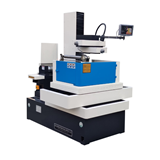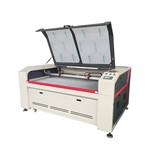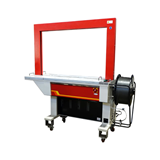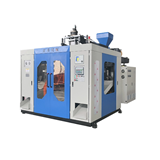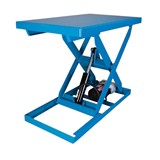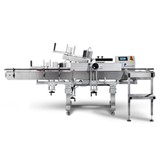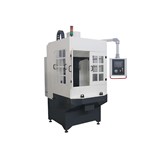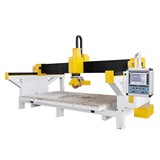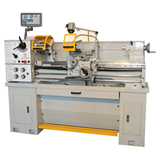Looking to buy a panel saw in Australia? Discover prices, machine types, compliance tips, and what to check before you invest.
Key Takeaways
- Panel saws in Australia range from $2,000 to $45,000+, depending on size, brand, and automation features.
- Running costs (blades, maintenance, power) average $1,000 to $2,500 annually for regular use.
- Buyers must ensure compliance with AS/NZS 4024.1501:2014 safety standards and local WHS regulations.
- Financing options such as chattel mortgage and equipment leasing are widely used, often with interest rates from 6%–12% p.a.
- Warranties typically range from 1 to 5 years, with extended coverage available for high-end models.
Introduction
Whether you're fitting out a cabinetmaking business, upgrading your joinery shop, or expanding a woodworking operation, a quality panel saw is an essential investment. Designed for cutting large sheets of timber, MDF, particle board or plastics with precision and speed, panel saws help streamline production and reduce waste. This guide walks you through everything you need to know before purchasing a panel saw in Australia—covering machine types, price points, features, upkeep, compliance, and more.
Types of Panel Saws
There are several types of panel saws available in Australia, each suited to specific workloads and workshop layouts.
1. Vertical Panel Saws
- Ideal for compact workshops and lighter workloads.
- Sheet material is loaded upright, saving floor space.
- Manual or semi-automatic operation.
- Price Range: $2,000 – $10,000
- Best for: Signmakers, small furniture makers, DIY workshops.
2. Horizontal Sliding Table Panel Saws
- Most commonly used in professional cabinetmaking and joinery.
- High precision with ability to handle large boards.
- More powerful motors and advanced guides.
- Price Range: $10,000 – $25,000+
- Best for: Medium to large woodworking businesses.
3. CNC and Computer-Controlled Panel Saws
- Automated cutting based on CAD inputs.
- High throughput and consistency.
- Requires software and trained operators.
- Price Range: $30,000 – $100,000+
- Best for: High-volume commercial operations and factories.
Panel Saw Pricing in Australia
- Vertical manual panel saws
- Entry-level models start from around $2,000
- High-end models with better accuracy and build quality go up to $6,000
- Manual sliding table saws
- Prices typically range from $10,000 to $18,000, depending on size and features
- Automatic sliding table saws
- Expect to pay between $15,000 and $25,000 for machines with motorised functions and digital controls
- CNC panel saws
- Entry-level models start at $30,000
- Advanced, high-performance systems can exceed $100,000, especially those with full automation and nesting capabilities
Key Operations and Features to Consider
When evaluating a panel saw, consider the following:
- Cutting Capacity: Look for maximum rip length, blade height, and crosscut capacity.
- Scoring Unit: Helps reduce chipping in laminates and veneered boards.
- Motor Power: Ranges from 3kW to 7.5kW; higher power enables thicker or denser board cuts.
- Digital Readouts: Improve precision and reduce operator error.
- Dust Extraction Ports: Ensure compatibility with your existing extraction system.
Maintenance and Running Costs
Regular maintenance keeps your machine safe and productive.
Routine Maintenance Includes:
- Blade sharpening or replacement every 1–3 months ($100–$250 per blade).
- Lubrication of guides and bearings.
- Checking alignment of sliding tables and fences.
- Inspecting belts, motors and dust extraction ports.
Annual Running Costs:
- Blades and consumables: $800–$1,200
- Servicing and inspections: $500–$1,000
- Electricity costs (3-phase units): $300–$500
- Estimated Annual Total: $1,000 – $2,500
Parts and Accessories
When budgeting, factor in parts and add-ons:
- Replacement Blades: $150 – $300
- Scoring Blades: $100 – $200
- Sliding Tables & Extensions: $500 – $3,000
- Digital Fence Upgrades: $1,000 – $3,500
- Dust Extraction Systems: $1,500 – $5,000
Financing Options in Australia
Financing can help preserve working capital while acquiring essential equipment.
Common Financing Methods:
- Chattel Mortgage: Ownership from day one; tax-deductible interest and depreciation.
- Finance Lease: Lower upfront cost; return or purchase the equipment at lease end.
- Equipment Rental: Best for short-term or project-based use.
Warranties & Support
Most panel saws come with manufacturer warranties:
- Standard Warranty: 1–2 years
- Extended Warranty (Optional): Up to 5 years
- What’s Typically Covered:
- Manufacturing defects
- Motor and control failures
- Major mechanical components
Compliance and Certification in Australia
Operating a panel saw requires strict adherence to Australian safety standards:
- AS/NZS 4024.1501:2014 – Safety of machinery – General principles for design.
- AS 1473.3–2001 – Woodworking machinery safety.
- Must include:
- Emergency stop mechanisms
- Blade guards
- Electrical compliance under AS/NZS 3000
Workplace Health and Safety (WHS) Obligations:
- Train all operators.
- Provide PPE (hearing protection, dust masks).
- Maintain service records and inspection logs.
FAQs – Panel Saw Buyers Ask
1. Can I use a panel saw in a home workshop?
Yes, especially vertical panel saws which are compact. Ensure proper dust extraction and noise control, and check local council noise regulations.
2. What materials can I cut with a panel saw?
Most panel saws can cut:
- MDF
- Plywood
- Veneered boards
- Acrylics and plastics (with specialised blades)
3. Are second-hand panel saws worth it?
They can be, particularly from reputable brands (Altendorf, SCM, Felder). Inspect for:
- Motor wear
- Table flatness
- Blade alignment
- Service history
4. What size blade do I need?
Standard sizes are 300mm to 400mm. Larger blades provide deeper cuts but require more power.
5. Is training required to operate a panel saw?
While not mandatory nationwide, training is highly recommended to reduce injury risk. Some suppliers offer training as part of the package.
Conclusion
Choosing the right panel saw comes down to understanding your workload, budget, and workshop layout. With price points ranging widely from just a few thousand dollars to well over $100,000, it’s critical to balance features, reliability, and long-term operational costs. Ensure your chosen machine is compliant with Australian safety standards, supported by warranty and service, and financed in a way that aligns with your cash flow needs.
When in doubt, speak directly with local suppliers, request demonstrations, and seek reviews from other buyers in the Australian market.



-160x160-state_article-rel-cat.png)

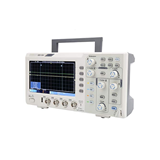
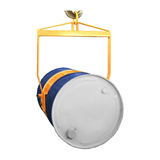

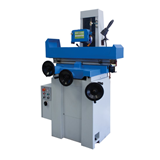


-160x160-state_article-rel-cat.png)
